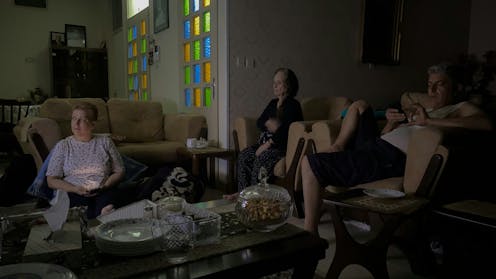Source: The Conversation – UK – By Paul Simmonds, Strategy & International Business Group, Warwick Business School, University of Warwick
The last few months have been busy for Royal Mail. In late April, Czech businessman Daniel Kretinsky’s EP Group acquired its parent company, International Distribution Services, for £3.6 billion – a value well below the May 2021 peak of £6 billion.
Then, regulator Ofcom announced that from July 28 there would be changes to a regulatory framework called the universal service obligation (USO). This effectively determines delivery standards for Royal Mail – and has been seen as a major barrier to its profitability. The company, which was privatised in 2013, made an adjusted operating loss of £348 million in 2023-24 (and £419 million in 2022-23).
So what do the events of the past few months mean for its future?
It has seen letter volumes fall from a peak of 20 billion in 2004-5 to only 6.6 billion in 2023-24. At the same time, parcel volumes have grown to 3.9 billion – driven by a rise in home shopping. However, Royal Mail has struggled to manage this shift and maintain profitability, effectively downsizing letter infrastructure and rebalancing its workforce to reflect this.
Meanwhile, the costs of meeting its USO obligations have meant its performance has deteriorated. There is competition in letters – but only for the most profitable business. Delivery company Whistl collects and processes bulk business mail and pays Royal Mail to deliver “the last mile”. But Whistl sits outside the USO and can cherry-pick its market segment.
The new USO still requires Royal Mail to deliver first-class letters six days a week, but second-class deliveries will now be on alternate weekdays only. Parcel deliveries are five days a week. Crucially, the obligation applies to around 32 million UK addresses – all for the same price.
The target for delivering first-class post within one day is falling from 93.5% to 90%. For second-class, the three-day target is falling from 98.5% to 95%. There’s also a new target – 99% of all post must arrive no more than two days late.
In making these changes, Ofcom is seeking to strike a balance between reliability, affordability and sustainability. It believes the changes will save Royal Mail between £250 million and £425 million a year, ensuring the service will break even and continue.
However, the company’s 2024-25 performance is below the new targets (76.5% for first-class and 92.2% for second class). As such, it’s likely to come in for more fines from Ofcom to add to those totalling £16 million for the previous two years.
In addition, its ability to increase revenue by raising prices might be curtailed. Second-class prices are regulated – increases are linked to affordability and inflation. They have risen by 74% since 2013, while first-class prices are unregulated and increased by 183%. For comparison, inflation was around 40% over the same period.
Ofcom has said it may also regulate first-class costs, amid concerns that Royal Mail may raise them to such a level that demand disappears, leaving only second-class post.
Change must come
Despite growth, Royal Mail’s parcels business faces headwinds – its market share fell from 45% in 2014-15 to 35% in 2023-24. Competitors, including FedEx, DHL, Evri, DPD and Amazon are not encumbered by USO obligations. This means they can be leaner and more aggressive in their pricing.
In 2020, Royal Mail lost its monopoly with the Post Office, which now also offers services from Evri and DPD. These two companies recently announced a merger, which is awaiting approval by regulator the Competition and Markets Authority but could create a company delivering more than a billion parcels a year.
In addition to modernising sorting offices, Royal Mail will quickly need to adopt technology such as smart postboxes and parcel lockers in order to compete – but for now it is well behind. A recent contract with supermarket Sainsbury’s to put lockers in stores is a good start, but Royal Mail has only 1,500 lockers compared to Amazon’s 5,000 and Inpost’s more than 7,500.
The impact of the EP Group takeover may take some time to be realised. The guarantees given to the government and unions to get the deal done will limit the extent of change for the first few years. Key assurances include maintaining the USO (whatever form that might take) and regulatory compliance, as well as keeping headquarters and tax residency in the UK.
On top of this, it must also protect the brand, reinvest any pension surplus into Royal Mail, and it cannot sell off or break up the company, outsource services or make compulsory redundancies.

Michael J P/Shutterstock
These legally binding commitments, supported by a government “golden share” with some veto powers, are not open-ended. Most are valid for five years but that of no compulsory redundancies was originally valid only until 2025. What happens after they expire is uncertain, but the business has to change significantly. Kretinsky has spoken of the need to modernise to keep pace with competitors. This means there will have to be significant change – sooner rather than later.
Improving productivity will be key, and that is very likely to mean redundancies and changes to work practices. Royal Mail’s management faced a series of damaging strikes in 2022 and 2023. But Kretinsky has sought to work with unions, principally the Communication Workers Union.
He has reached a three-year pay deal with greater job security. But efficiency needs to be improved if Royal Mail is to become profitable – and in a labour-intensive business that could mean difficult decisions and fewer employees.
What Royal Mail has in its favour however is its status as a trusted brand (although recent delivery performance may have tarnished that in some customers’ eyes). Changes to the USO will help in the short term. But the volume of letters will continue to fall and the company’s success will still depend on its ability to match capacity with demand while achieving its targets.
Further USO changes are inevitable. And so is the demise of first-class post, as price increases render it a low-volume, uneconomic service. The takeover is likely to accelerate change.
The parcels business will probably become an integral part of a pan-European logistics enterprise, alongside EP’s existing ventures and Royal Mail’s sister firm, parcel company GLS. This inevitably leaves the letters side of the company as a much smaller offering – with a very uncertain future.
![]()
Paul Simmonds does not work for, consult, own shares in or receive funding from any company or organisation that would benefit from this article, and has disclosed no relevant affiliations beyond their academic appointment.
– ref. Royal Mail’s delivery pledges have changed. Here’s what the company could look like in future – https://theconversation.com/royal-mails-delivery-pledges-have-changed-heres-what-the-company-could-look-like-in-future-261643









